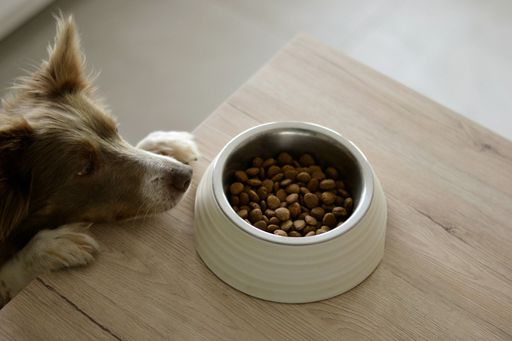While it may seem like a daunting prospect, producing homemade dog food for your canine companion really doesn’t have to be. In reality, dog food ingredients rarely differ that much from the food you love eating yourself. By providing your dog with fresh raw food every day, not only will they love their food, but they’ll also become healthier as a result.
If you’re a little lost as to how to get started though, then don’t worry – we are here to help. In this article, we take a look at how to create the best homemade food for your pooch, detailing the various pros and cons of using specific ingredients and recipes.
Raw diet?
Serving raw food to your dog tends to be a relatively controversial topic amongst dog owners. This is because raw, uncooked food has an increased risk of bacteria and sharp bones affecting their internal health, making it difficult for vets to accurately diagnose any health issues at hand.
That said, raw food diets can also provide many benefits to your pooch. From shinier coats and healthier skin, to cleaner teeth and higher levels of energy, providing your dog with a natural raw-based diet could make them look and feel a whole lot better.
Grain-free?
While celiac disease tends to be fairly uncommon in dogs, certain breeds – like Irish Setters – are known to suffer from the condition. Therefore, if you’re looking to avoid feeding your dog grain as part of their diet, there are a number of alternative options you could use.
For instance, while rice may be commonly used in dog food, this high-gluten ingredient should be replaced. Here are some great recipes to think about trying:
- Planet Paws. Containing fish oil, whole eggs, liver, beef and veg, this raw dog food recipe is both quick and easy to make.
- Pucks. Combining a raw beef-based recipe and a cooked chicken-based recipe, these dog food pucks are a great option if you’re looking for the best of raw and cooked ingredients.
Chicken-based?
Chicken is a widely-used meat that offers a number of benefits. Containing omega 6 fatty acids, essential amino acids, and glucosamine, it’s fairly unsurprising as to why its use is as popular as it is.
Nonetheless, uncooked chicken can pose a heightened risk of salmonella, as it would for humans. Therefore, if you’re thinking of adding raw chicken to your pooch’s diet, you should discuss the idea with your vet first to gain their approval.
High protein?
While on the topic of chicken, protein is an absolutely essential component of your dog’s diet. Here are some key sources of protein to think about adding to your homemade dog food recipe:
- Animal-based. This includes meat, fish, whole eggs (including shells), bone meal, etc.
- Peanut butter. While it may be funny to put on your dog’s nose, peanut butter is a great high-protein ingredient to use in homemade dog food.
- Leafy greens. If you have any veggie scraps leftover from your own food, add them to your pooch’s diet as an inexpensive treat. They especially love leftover carrot or potato peelings.
- Legumes. Cooked beans like red kidney beans can be added to your dog’s food. Left uncooked, however, this could increase their risk of heart disease.
- Brewer’s yeast. A high-quality source of amino acids, B vitamins, and protein, Brewer’s yeast helps convert the nutrients your dog eats into energy.
It’s important to remember that each dog is different, so the quantities of protein they require will significantly vary. Therefore, check with your vet to see what your pooch’s protein intake should be.
Bad stomach?
If your furry friend frequently struggles with an upset stomach, then a bland diet should be used. Here are two great ways to keep that poor stomach at bay:
- Bone Broth. This ingredient is easily absorbed and can simply be poured onto pre-prepared meals or shop-bought kibble.
- PRV. As you probably know already, dogs will more or less eat anything their given, so there’s no need to get too fancy. A meal comprising of protein, rice and veggies is a simple yet effective choice.
High fibre?
Having a healthy amount of fibre in your dog’s diet will not only improve their blood sugar levels, but also aid digestion and weight loss. When searching for a high fibre recipe, the key ingredients to look out for include bran, brown rice, oats, lentils, beetroot, corn, quinoa, and pumpkin.
Low fat?
If you own a bit of a lazy pup who enjoys walking in the rain as much as you do, this increased level of inactivity can heighten their risk of obesity. To prevent this becoming an issue, avoiding high-fat ingredients in their dog food is imperative.
Here are some great low-fat ingredients to think about feeding your pooch:
- Meat. Turkey, chicken, game and organ meat are all relatively low in fat.
- Fruit. Apples, bananas and blueberries can all be eaten by dogs. Avoid grapes though, as they can be highly poisonous.
- Coconut oil. This low-fat ingredient will not only taste nice for your pup, but it’ll also leave their coat looking shinier as a result.



















